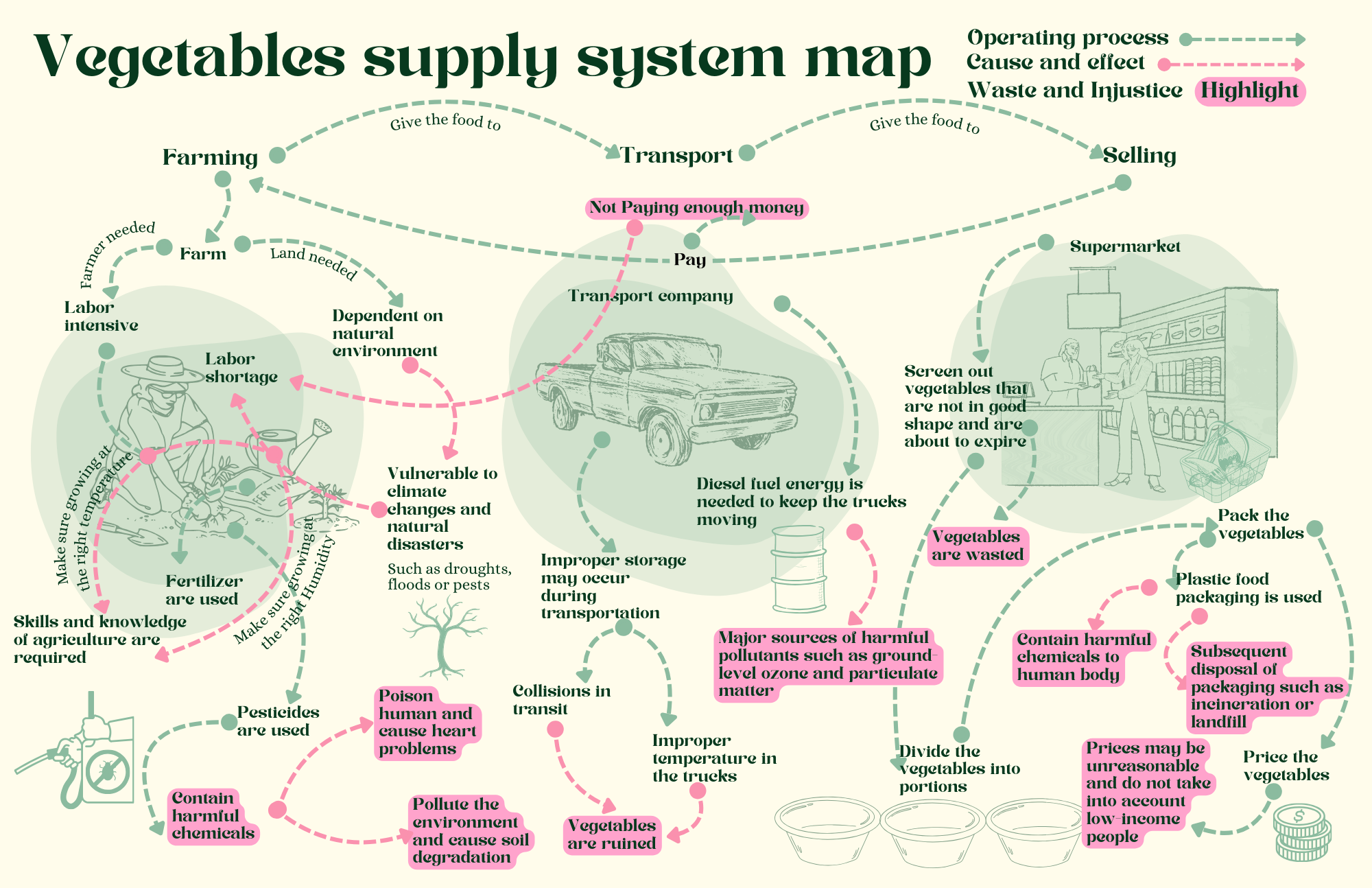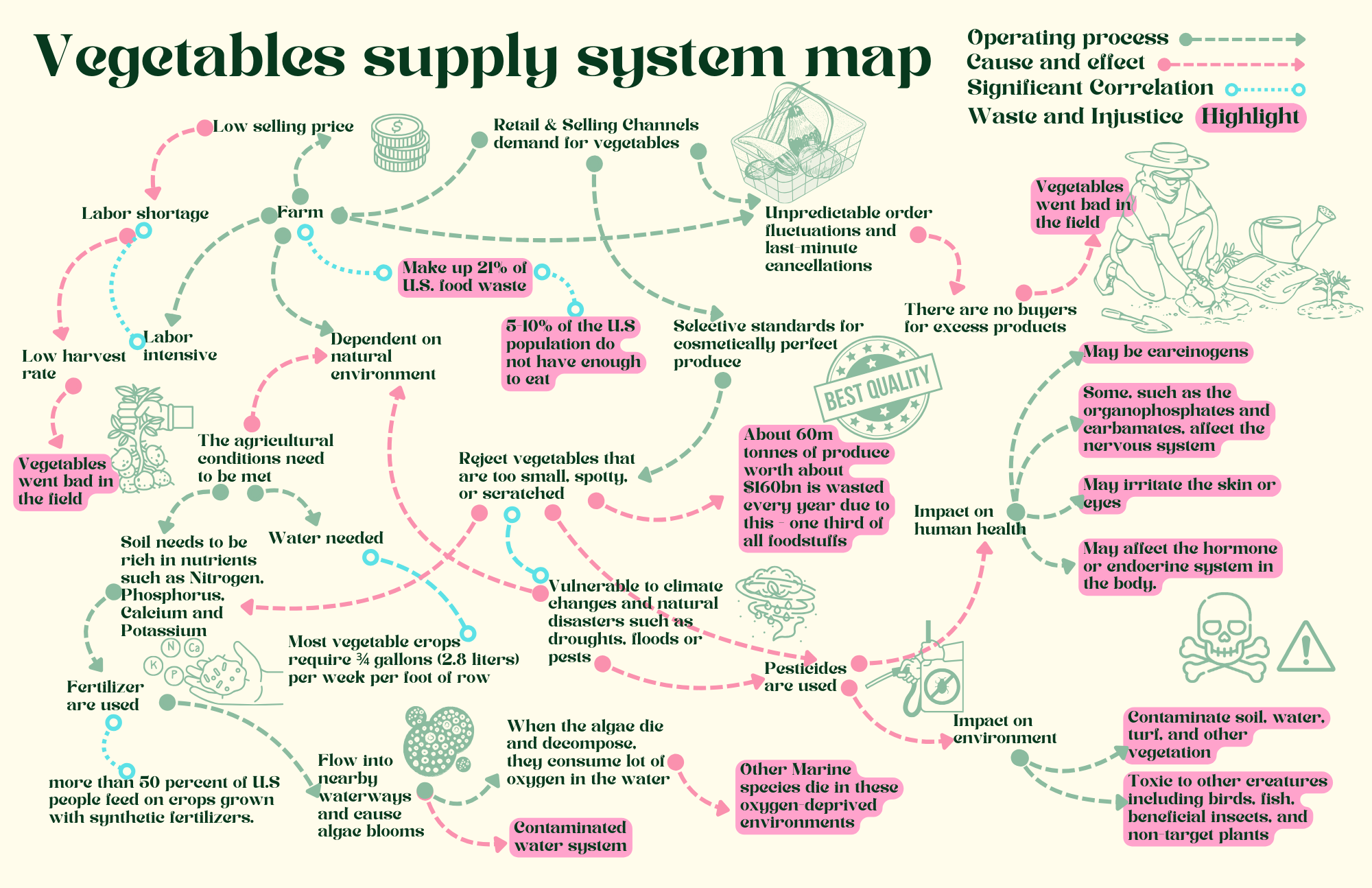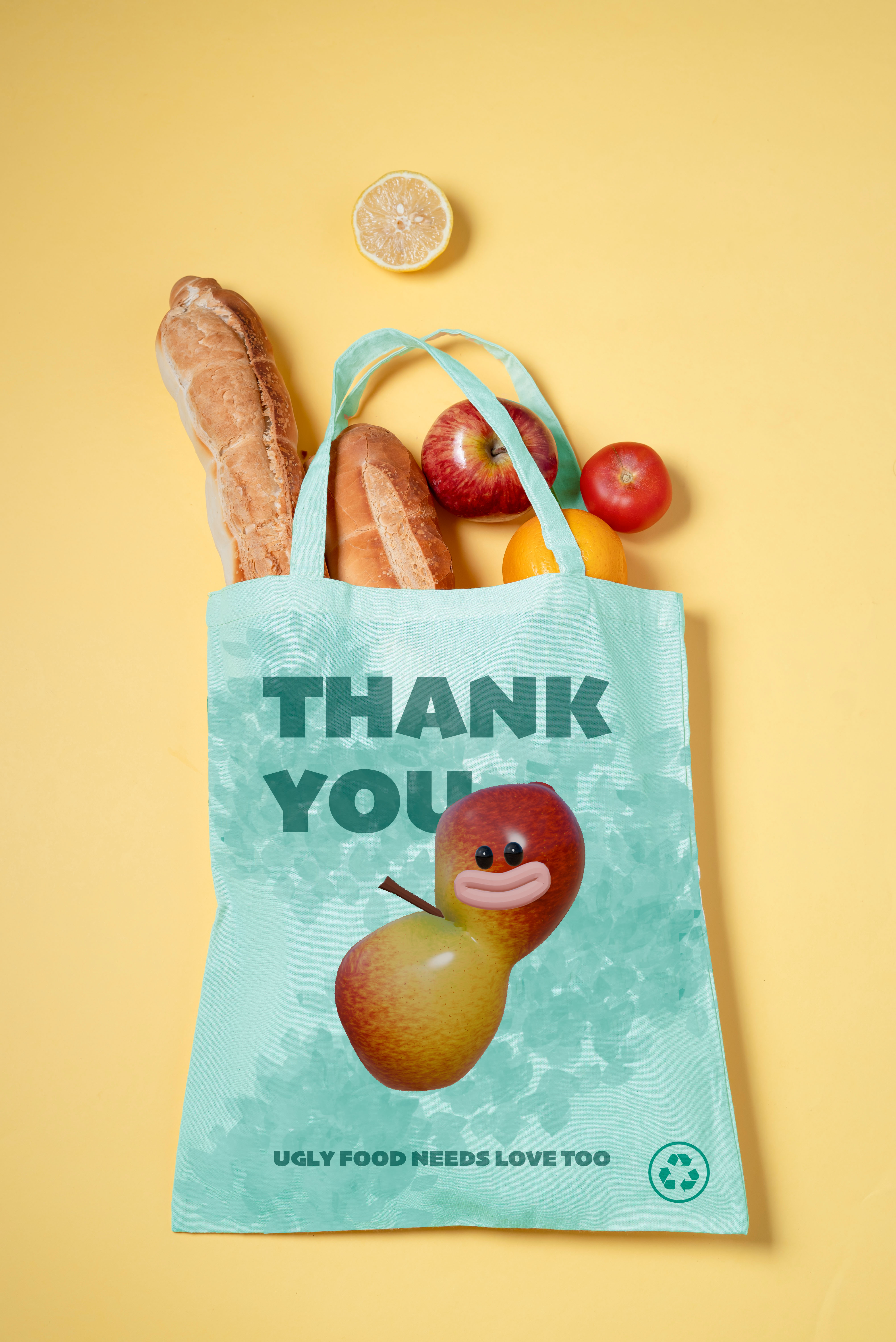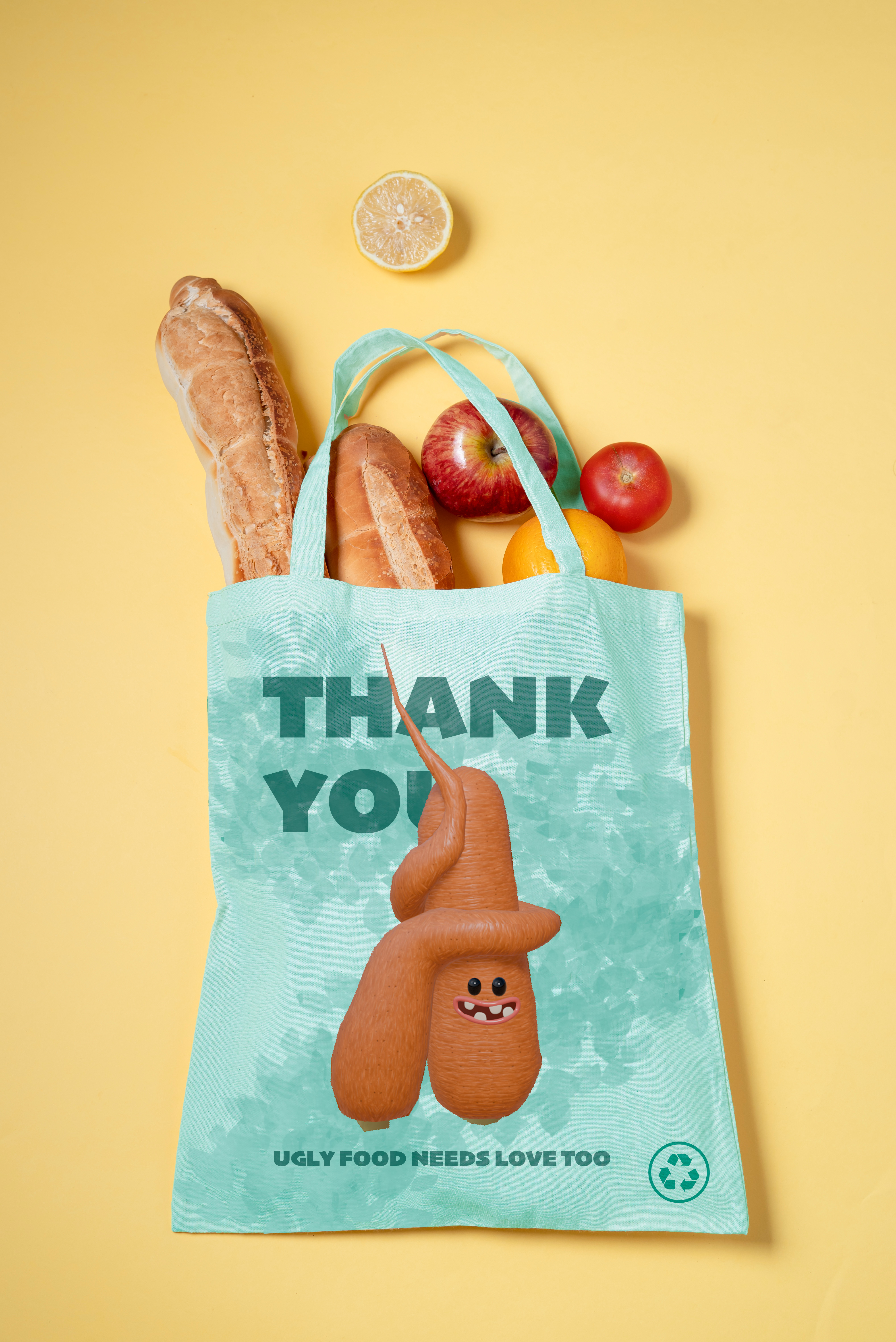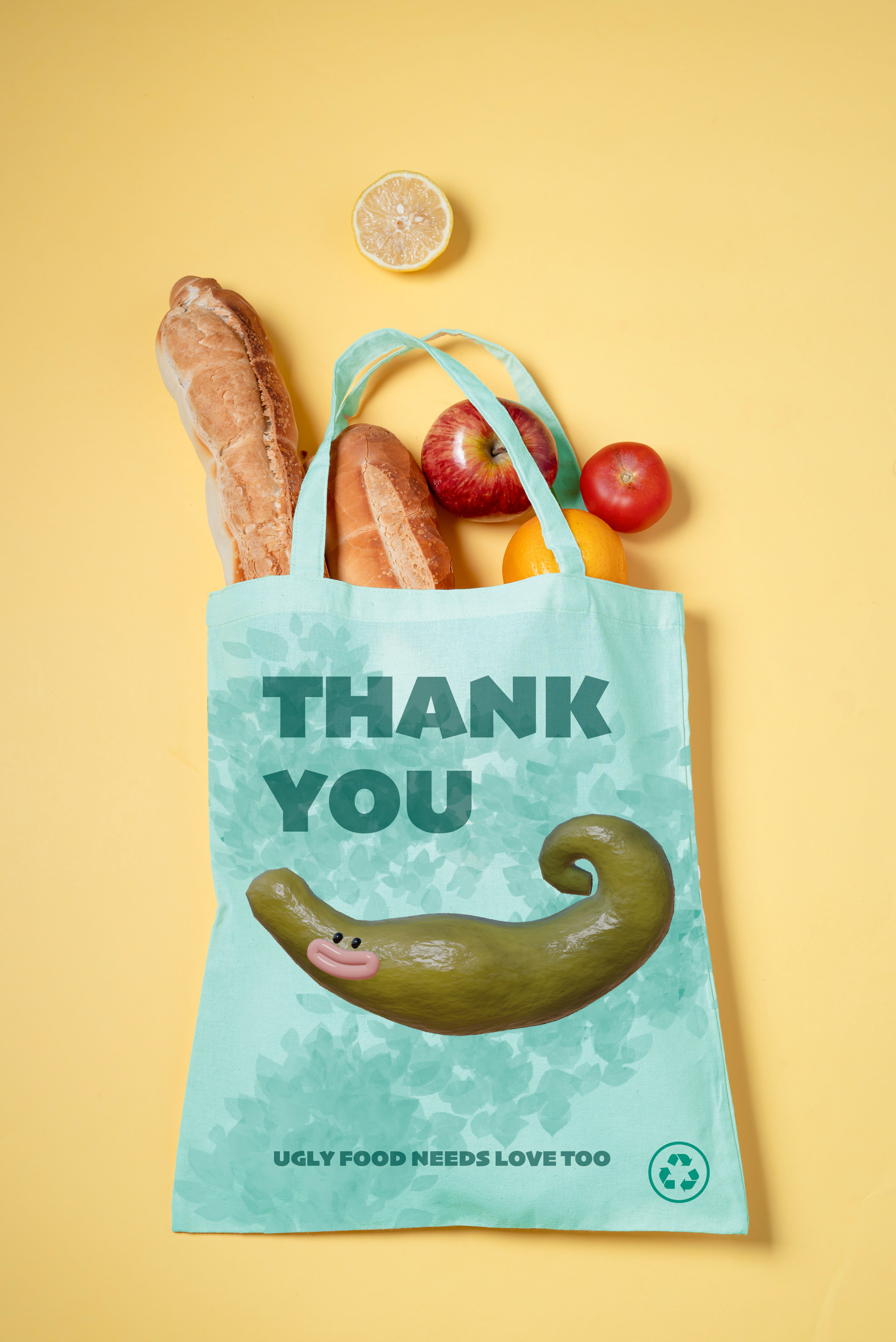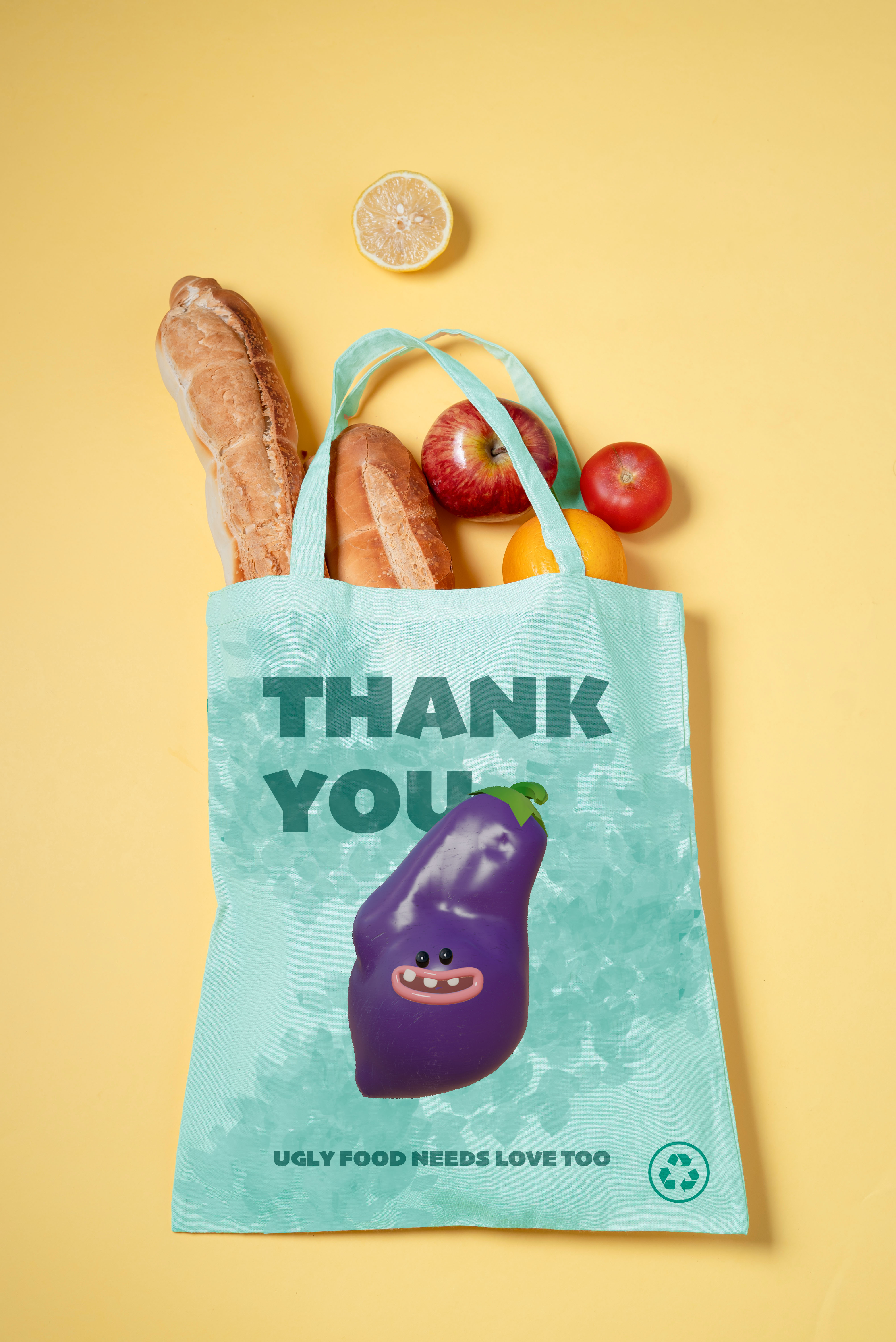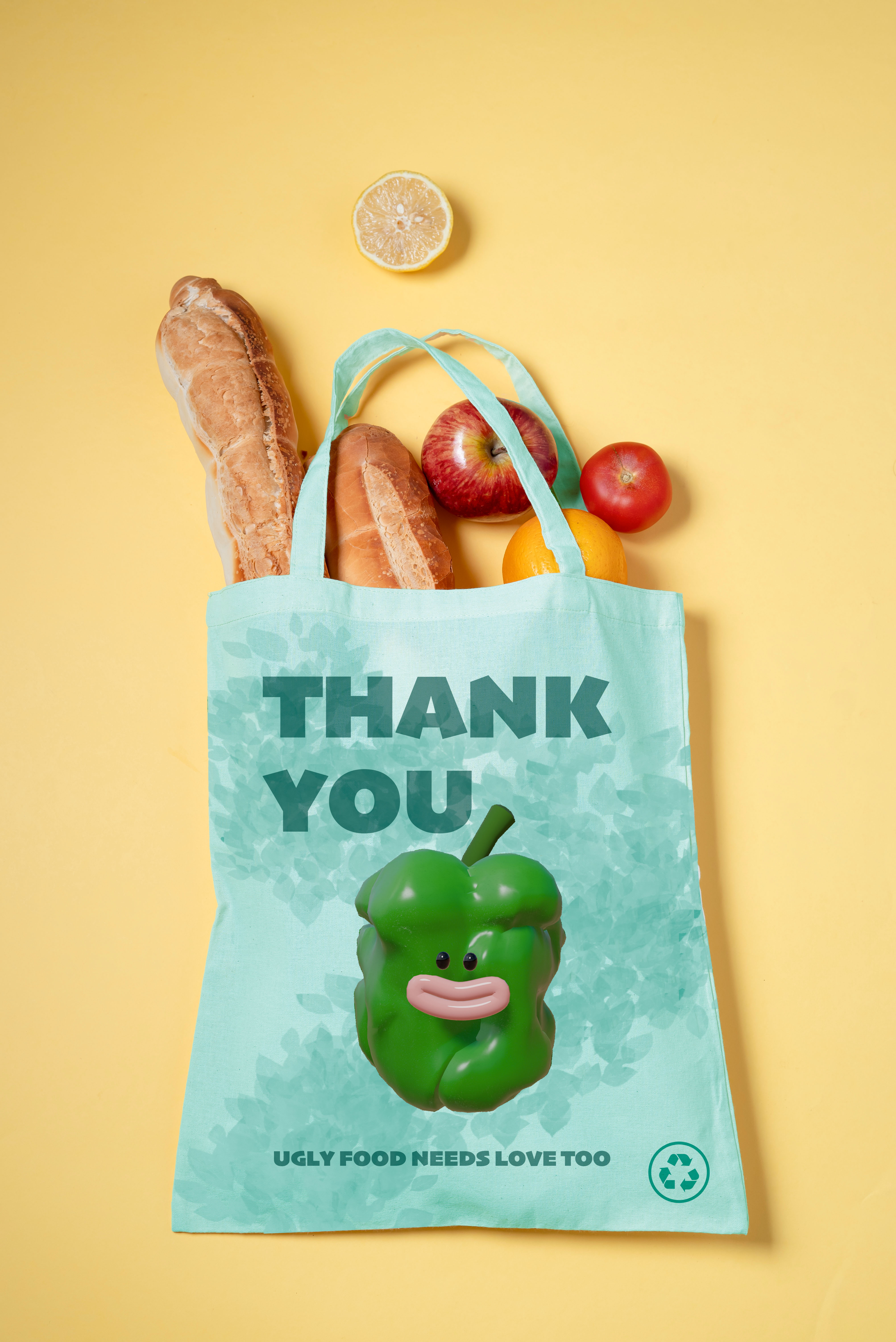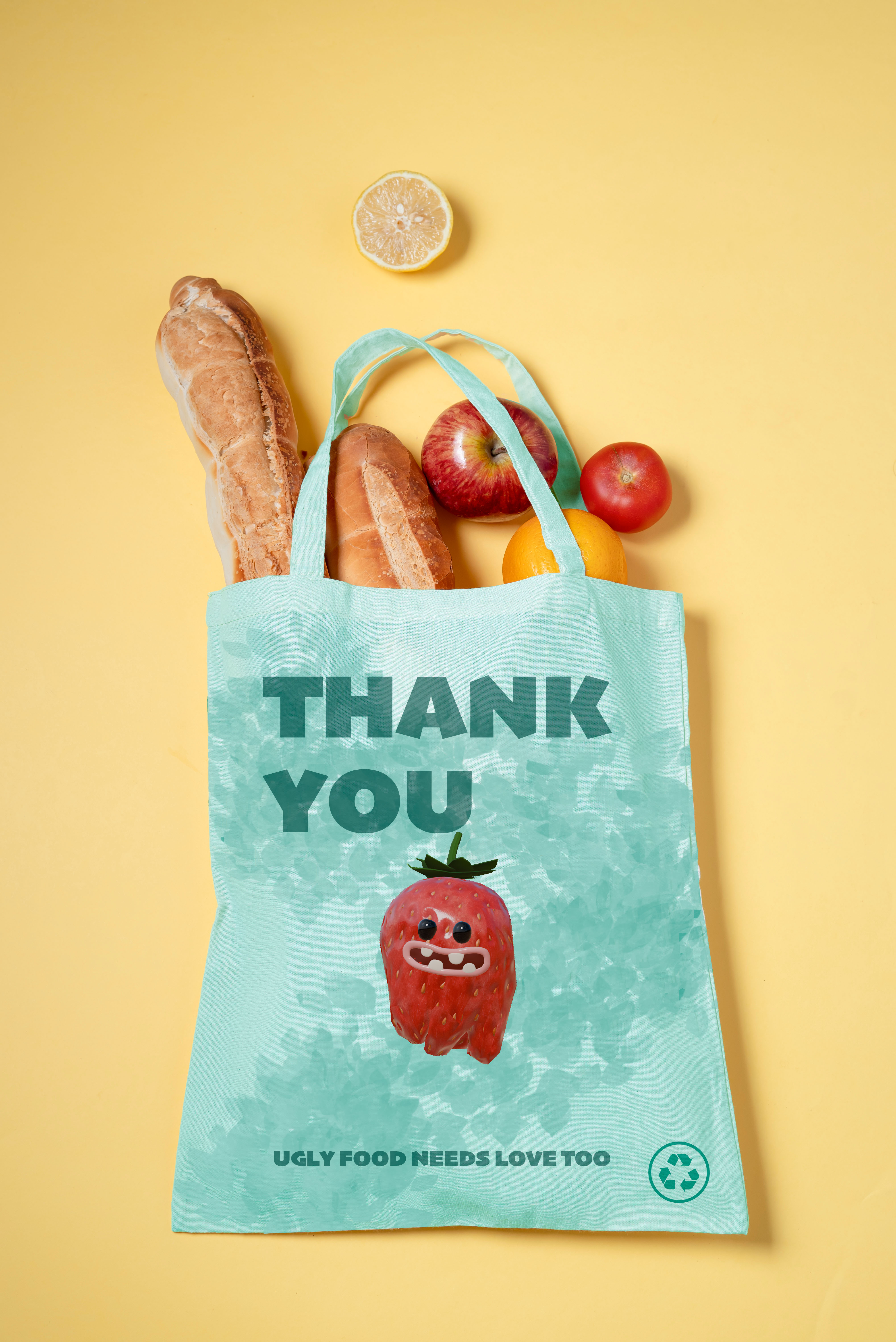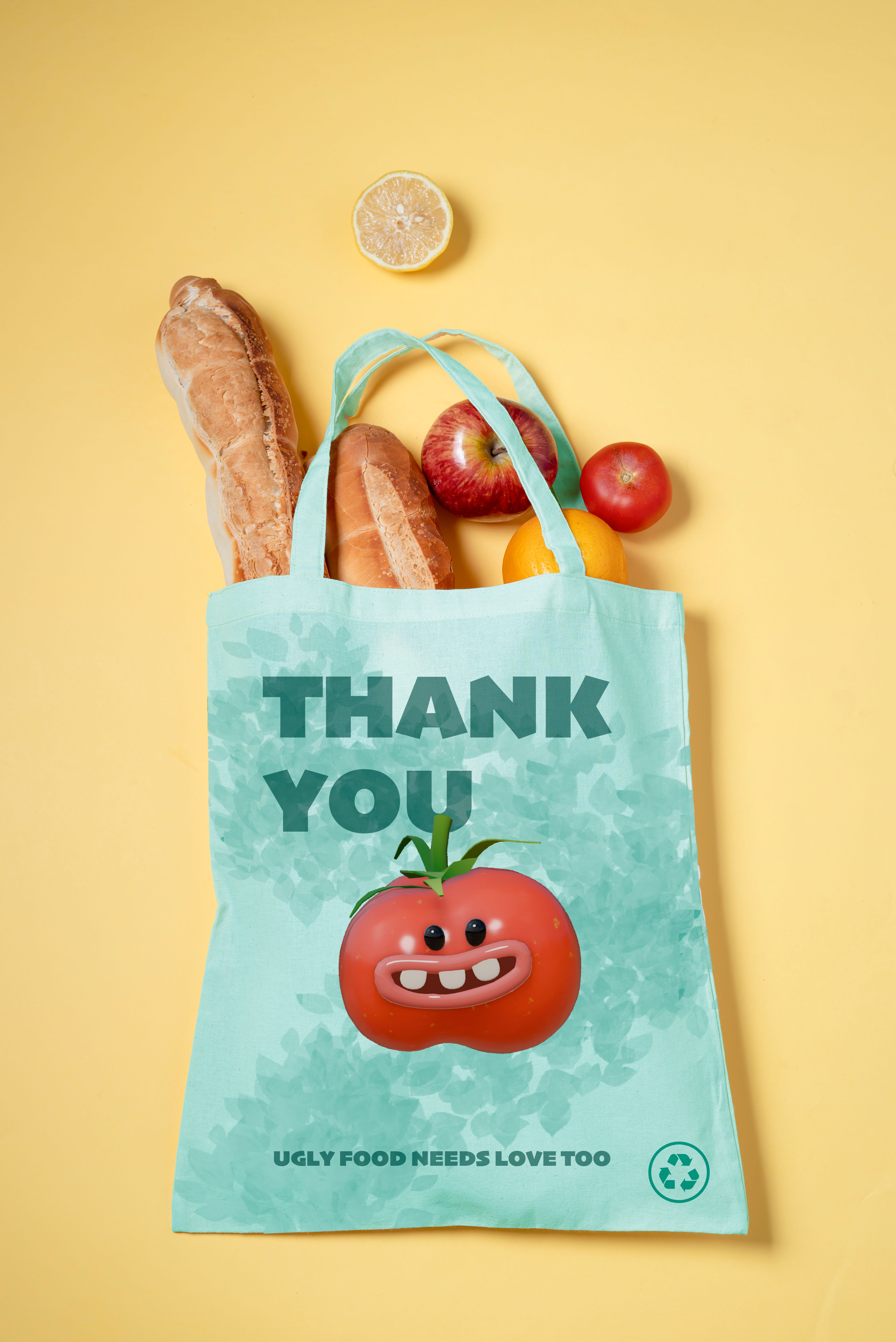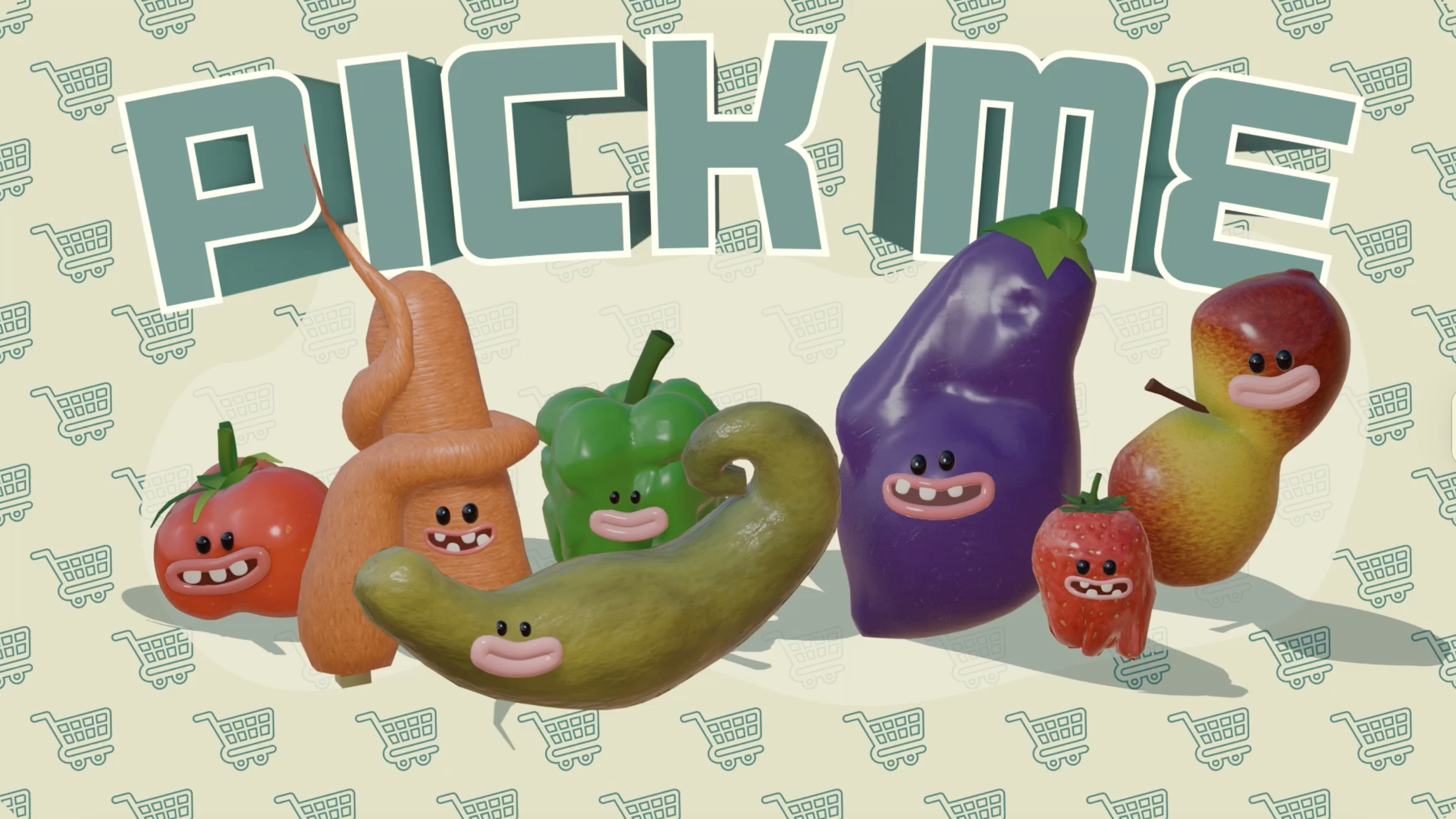
Sustainability
Research
Strategy
Action
3D modeling
Animation
Surface Design
The overarching goal of this project is to research and address the waste and injustices that occur in the vegetable supply system during the agriculture and selling process, which is driven to a large extent by consumers' high cosmetic standards for crop appearance. Because consumers have high cosmetic standards for the appearance of crops, farmers are forced to use fertilizers and pesticides to assist in crop production and ensure that they look good. I aim to shift consumer expectations towards more sustainable and environmentally friendly agricultural practices rather than the good-looking appearance that is highly dependent on chemical inputs. The solution to the problem should simultaneously focus on educational activities, exploring new food retail outlets, and strengthening regulatory measures.

